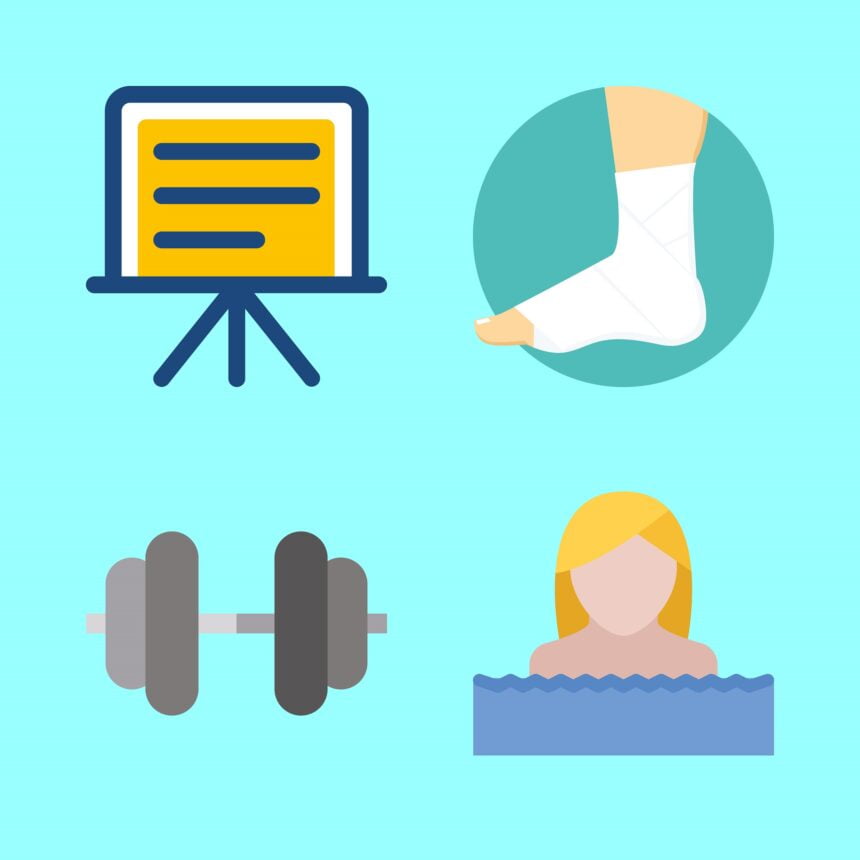More and more of us are making the gym part of our lives. It’s undoubtedly a good thing for your health—that’s why many of us do it! Nevertheless, like any environment, the gym poses health and safety risks, especially if you’re new to it. At the gym you’ll move fast, use specialist equipment and push yourself to your physical limits, and all these factors create a risk of injury. Conversely, if you’re already in the gym-going habit and you know your local gym inside out, you might be in danger of growing blind to the risks of the environment. Complacency causes as many accidents as unfamiliarity.
So whether you’re a gym novice or an old hand, it’s worth brushing up on these basic tips for staying safe at the gym:
Get to know the equipment
The heart of a gym is in its exercise equipment, from running machines, cross-trainers and rowing machines, to pull-up bars, free weights and climbing ropes. If you’re going to the gym, the chances are you’ll be using at least one and probably several of these pieces of equipment. Any of them can be dangerous, if used improperly.
Most gyms offer a free induction session for new members, at which a personal trainer will show you how to use the equipment properly. It’s a really good idea to take advantage of this session. Knowing the proper technique for the equipment you want to use will not only reduce your risk of injury, it will also make your workout more efficient.
Almost all gym equipment carries instructions on proper use and technique. Read these instructions the first time you use a machine, even if you’ve been shown how to use it (you might have remembered wrong, or misunderstood!) Never ignore the instructions. It sounds obvious, but it bears repeating. Gym machines are designed to put stress on your body. Improper use can be very dangerous.
Even if you’ve been using a machine for years, it’s a good idea to brush up on technique on a regular basis, even if you don’t feel you need it. Almost everyone develops bad habits when they’ve been using a particular piece of equipment for a long time, and these bad habits can lead to injury and cause accidents.
Don’t assume that every running machine, or cross-trainer, is alike. Accidents and injuries commonly occur when gym-goers assume that the machine at their new gym is the same as the one at their last gym. Subtle differences can make a big impact when you’re exercising at speed or with large weights. For instance, most running machines have a button which allows you to increase the treadmill speed, but the intervals of increase vary enormously between different manufacturers, and even between different models from the same manufacturer. “Level Five” might be a comfortable jog on one machine but sending you flying off the back of another.
Respect your limits
For many of us, part of the pleasure of exercise is pushing ourselves and testing our limits. Nevertheless, it’s important to approach your limits in a respectful way.
Increase distances, speeds and weights gradually. One of the most common causes of injury at the gym is overconfidence. Just because you lifted 2kg easily doesn’t mean you can jump to 10kg. Do 5kg first—it’s not a waste of time because you’re still working the muscle. If you’ve been out of training for a while, never take it for granted you can resume at your previous level. Start safely below your previous maximum weight or speed and push yourself from there.
Don’t assume that your fitness is immediately transferrable from one discipline to another: for instance, just because you can do 5km on a stepping machine without injuring yourself doesn’t necessarily mean you can do it on a running machine. Different equipment stresses different parts of your body.
Gym-going can be addictive. The post-exercise endorphin rush can form a psychological addiction as powerful as an psychoactive drug. Plus, when you start to see your fitness improving and to feel more confident in your body, it’s natural to want more. Many injuries result from people pushing for bigger endorphin-rushes or just more of that body-positive feeling. Long-term over-exertion is as dangerous as short-term over-exertion. Listen to your body. If four gym sessions a week are leaving you drained and sore, drop down to three for a bit.
Be aware of other people
Although most injuries tend to result from a failure to respect equipment or a gym-goer’s own limits, most serious accidents at the gym involve more than one person. It’s in every gym’s interests to cram as many people into the space as possible, and when a gym is busy there are lots of risks.
When you’re moving through the space, be aware of potential hazards, and observe what your fellow gym-goers can and can’t see. For instance, if you have to squeeze past a weightlifter, wait until he’s put his weights down, and pass in front of him, so he knows not to lift again until you’re past. If you have to go behind him, let him know you’re there. Be aware that many people listen to music when they exercise, so they may not hear you coming. It can be dangerous to startle someone while they’re using gym equipment, so where possible approach people along their line of sight, so they can see you coming even if they can’t hear you.
Claiming compensation
If you follow the above tips, you should be able to avoid injuring yourself, and you won’t cause accidents. However, the gym remains a potentially hazardous place, and there’s nothing you can do about the carelessness of other people, malfunctioning equipment, or improperly trained staff. If you’re injured while at the gym, you may be able to claim compensation from the gym’s owner or operator. Your first step is to speak to a legal professional or check out the information available on AccidentClaims.co.uk which will provide guidance on how to assess your eligibility for a compensation claim.








